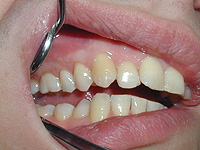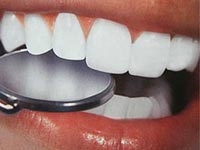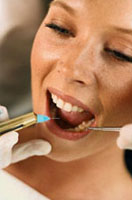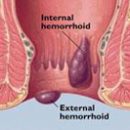Pulpitis and periodontitis are common diseases of the dental system, where the pulpitic clinic is represented by amplifying acute, irradiating pain, which more often arising at night. Methods of treatment of pulpitis are determined on the basis of diagnostics, which, unfortunately, is difficult when the milk tooth is pulp in children. We are talking about it.
Content
- Differential diagnostics of pulpitis and apical periodontitis
- Diagnostics and methods of treatment of pulpitis
- Pulpita milk temporary tooth
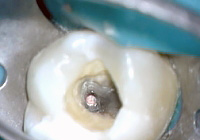 Complaints on sharp and unbearable pains, up to 30 minutes and more caused by supercooling or, on the contrary, receiving hot food, which occur at night — This description of the clinic of the pulpit. It should be noted a clear localization of pain, the patient confidently indicates a causal place, where, most often, there is a seal or carious cavity, its bottom is represented by a pigmented dentin soft consistency, a significant sharp pain is determined at the point of contact with the pulp, and the percussion of the tooth is determined — painless. Sounding indicates a closed pulp chamber, there is a purulent-bloody separated, radiographic changes are not detected. When the progression of the pulp is often noted the spread of pain along the branches of the trigeminal nerve pale-pink mucosa is painless during palpation. The general deterioration of health can be accompanied by the clinic of the progressive pulpitis, when the patient almost does not feel the weakening of pain.
Complaints on sharp and unbearable pains, up to 30 minutes and more caused by supercooling or, on the contrary, receiving hot food, which occur at night — This description of the clinic of the pulpit. It should be noted a clear localization of pain, the patient confidently indicates a causal place, where, most often, there is a seal or carious cavity, its bottom is represented by a pigmented dentin soft consistency, a significant sharp pain is determined at the point of contact with the pulp, and the percussion of the tooth is determined — painless. Sounding indicates a closed pulp chamber, there is a purulent-bloody separated, radiographic changes are not detected. When the progression of the pulp is often noted the spread of pain along the branches of the trigeminal nerve pale-pink mucosa is painless during palpation. The general deterioration of health can be accompanied by the clinic of the progressive pulpitis, when the patient almost does not feel the weakening of pain.
Differential diagnostics of pulpitis and apical periodontitis
Diagnosis of inflammation of the pulp is based on the classification of the disease, allocate acute and chronic forms, each of which has its own characteristics. The main variants of the acute form are hyperemia pulp, serous limited or diffuse process, purulent and traumatic inflammation. In this case, the disease occurs in the case of penetration of infection in the pulp with a closed pulp chamber, for example, through the thinned outdoor, destroyed by caries.
In the case of the development of chronic form, the fibrous, hypertrophic and gangrene process is distinguished, and the causes of inflammation of soft tooth tissues can be:
- microbes and their toxins from carious cavity;
- Impact of injury of various origin;
- Drip infection in a pulp through blood.
Differential diagnosis of interconnected pulpitis and periodontitis is built on the infectious factor of their origin. The propagation of periodontitis is carried out through the top dental opening, there is an acute pain reaction when pricking to the tooth, the percussion of the tooth hurts the patient in disassemble. The gaps without pain become all shorter, any touch even the language sharply painfully, noticeable swelling of the cheek and lips, the gums of the feet and hyperemic, the increase in lymph nodes is marked.
Diagnostics and methods of treatment of pulpitis
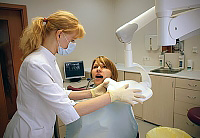 The choice of the method of treatment of pulpitis depends on the nature of the flow and form of manifestation of the disease, the age of the patient and its condition, the time of appealing to the professional and many other objective and subjective reasons. Cases of late visits to the doctor in dentistry are quite common due to the primary manifestation of the chronic version of the disease. Long-term forms of inflammation of the pulp are diagnosed as gangrenous, which leads the doctor from the true picture and choosing the treatment method, including biological, when pulpit from young people. The main type of surgical intervention in acute inflammation of the pulp is the depulpoviology during the conduct of vital or maiden extirpation.
The choice of the method of treatment of pulpitis depends on the nature of the flow and form of manifestation of the disease, the age of the patient and its condition, the time of appealing to the professional and many other objective and subjective reasons. Cases of late visits to the doctor in dentistry are quite common due to the primary manifestation of the chronic version of the disease. Long-term forms of inflammation of the pulp are diagnosed as gangrenous, which leads the doctor from the true picture and choosing the treatment method, including biological, when pulpit from young people. The main type of surgical intervention in acute inflammation of the pulp is the depulpoviology during the conduct of vital or maiden extirpation.
The diagnosis is based on a patient survey, probing, percussion, palpation and analysis of leading features using the following instrumental methods:
- Electropotometry;
- petonometry;
- ratodinameometry;
- X-ray diagnostics and computed tomography.
The last reception is most widely applicable in the practice of dentists, allows you to determine the presence of a carious cavity, as well as dentikles and parters of the pulp, the location and proximity of the root of the root to the anatomical formations of the jaws, the assessment of the quality of fillings and sealing the toothing channel.
Pulpita milk temporary tooth
Pulpita milk tooth — Pressure quite frequent. Diagnosis is significantly difficult for a number of reasons, including because the child is often unable to describe and characterize pain in the oral cavity, which sometimes does not allow the doctor immediately proceed to therapy. The manifestation of clinical symptoms of the pulp of milk tooth in children at different ages is associated with the characteristics of the structure of solid tissues and pulp. To help the doctor — Inspection of a sick child, a conversation with him and a number of diagnostic techniques, which it was above, to help parents — Prevention that will save the baby from the pulpitis and further possible complications.



